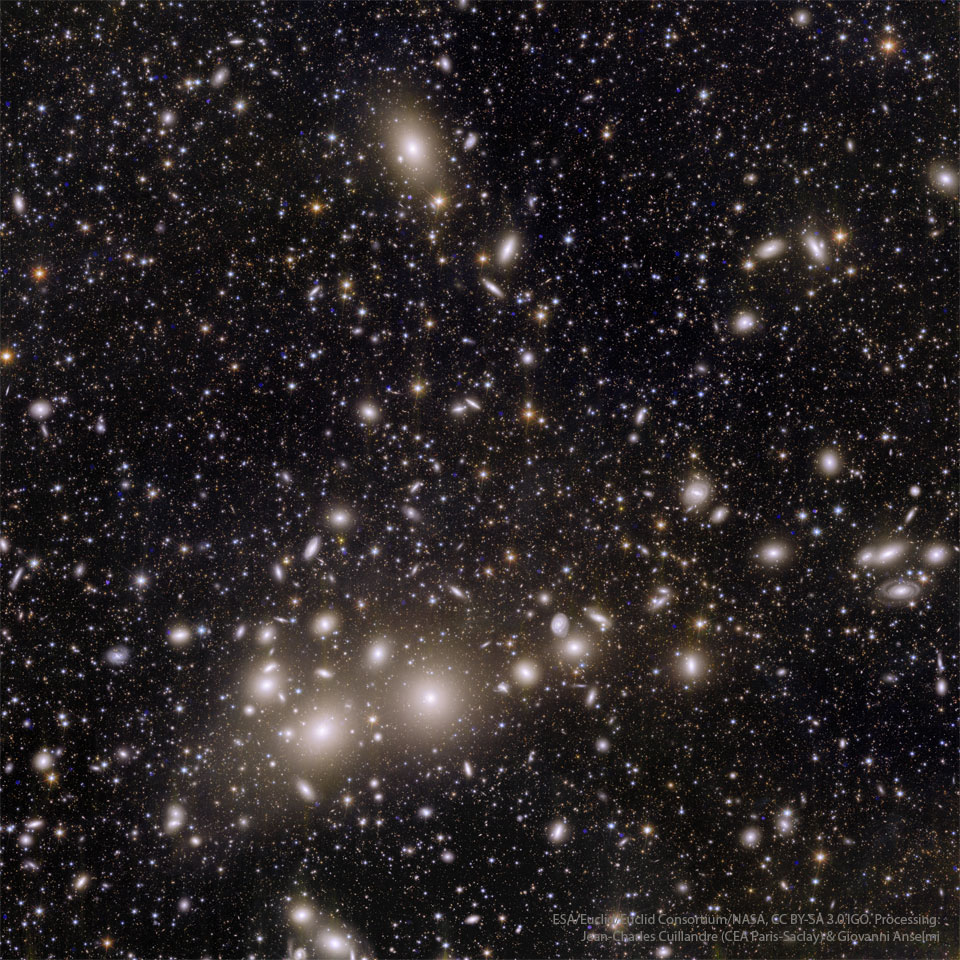shaileshs wrote: ↑Wed Nov 08, 2023 9:03 pm
Ann wrote: ↑Wed Nov 08, 2023 6:05 am
It's hard not to ask oneself the question, "Why is it dark at night?", when one sees all those little galaxies as crystal-sharp grains of salt richly sprinkled all over Euclid's field.
Ann
And they say visible material is less than 4% of universe.. I have a hard time even understanding space between 2 stars within a galaxy (can't imagine how there's hardly collision when 2 galaxies merge).. It's beyond my imagination such vast "visible" matter, how one can imagine how vast the "darkness" surrounding visible matter is.. Simply impossible for human imagination. In AWE of creator and creation. Humbling thought. As @Sadhguru correctly says, human beings (and even other living entities) are just a pop-up on screen and we all feel we are so great..

- Cotton balls.png (51.78 KiB) Viewed 63269 times
I once built a model of the inner solar system (the Sun, Mercury, Venus, the Earth and the Moon and Mars) using a 2 meter in diameter round table cloth, three 2 centimeter wide cotton balls and two yellow peas.
Then I stretched my mathematical ability to the limit to figure out that, yes, the distance between the Earth and the Sun was some 200 meters, give or take. And the distance between the Earth and the Moon was some 60 centimeters, like the length of your lower arm. (The distance between the Sun and Mars was some 300 meters, and the distance between the Sun and Venus was - I think - 145 meters. The distance from the Sun to Mercury may have been some 80 meters. Don't remember.)
Anyway. I asked two people to hold up the table cloth so that it looked like the round Sun. I asked other people to hold mercury, Venus, the Earth and Moon and Mars. I took long steps that I judged to be about a meter and counted my steps to put the planets in the right place.
A 100 meter track. The distance between
cotton ball Earth and table cloth Sun was twice as long.
Here's the deal. It was just
unbelievable how small the planets were and how far they were from the Sun. It was mindboggling! Oh, but the Earth and the Moon were close. It was suddenly not hard at all to understand that it had been possible to send people to the Moon. And it became so painfully obvious how immeasurably harder - or impossible? - it would be to send people to Mars!
Here's "the other deal". It was sort of shocking to see how "empty" the inner Solar system really is. And then we must remember that the outer Solar system is much emptier, at least when it comes to the distance between the planets. And let's not even start talking about the distance between the Sun and the nearest stars!
After I made my model of the Solar system, I can easily believe that stars so extremely rarely collide during a galactic merger. That's because they are so terrifically far apart. On the other hand, a galactic merger will doom almost any higher life forms anyway, or so I believe, because the terrible tidal forces unleashed by such a merger will play absolute havoc with most or all planetary orbits around their suns in such galaxies.
Ann
 Perseus Galaxy Cluster from Euclid
Perseus Galaxy Cluster from Euclid


